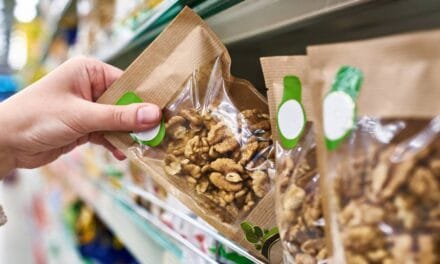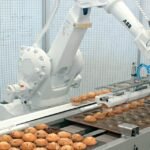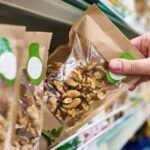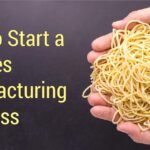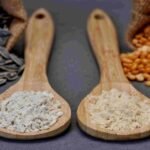As environmental concerns grow, sustainable food packaging has emerged as a vital solution. With rising consumer demand for eco-friendly options, this approach not only reduces waste and carbon footprints but also enhances brand reputation. Packaging experts, Priti Khemariya and Tanweer Alam*, explore the benefits and market trends shaping the future of sustainable food packaging.
Market trends shaping the sustainable food packaging
Sustainable food packaging refers to packaging that is designed to be beneficial, safe, and healthy for individuals and communities throughout its life cycle. It aims to minimise environmental impacts by using renewable or recycled materials, clean production technologies, and optimising materials and energy use. The goal is to create packaging solutions that support sustainability while ensuring the safety and quality of food products.
Environmental Impact of Traditional Packaging
Traditional food packaging, often made from plastic, contributes significantly to pollution, particularly in oceans and landfills. Sustainable packaging alternatives reduce waste, lower carbon footprints, and reduce reliance on fossil fuels used in plastic production. Increasing awareness of environmental issues has led to higher demand for eco-friendly products.
Consumers are now looking for packaging that is biodegradable, recyclable, or made from renewable resources. Sustainable packaging solutions can reduce the carbon footprint by as much as 30-70% compared to conventional packaging materials. Companies are adopting sustainability practices. Sustainable packaging can improve a company’s brand image and meet stakeholder expectations.
Market Trends in Sustainable Packaging
The global sustainable packaging market was valued at approximately $285 billion in 2024, and is projected to reach $301.8 billion in 2025. The market is expected to grow at a compound annual growth rate (CAGR) of 5.8% to 7.9% from 2025 to 2035, with estimates placing market size between $530 billion to $557 billion by 2034-2035. This steady growth is driven by increasing demand from consumers and governments for more eco-friendly packaging solutions
Sustainable Food Packaging Materials
Different food packaging practices have diverse types of sustainable packaging materials. Plant-based plastics from renewable resources like corn starch, sugarcane, or potato starch are used for sustainable food packaging development. These bioplastics (e.g., PLA – Polylactic Acid) are biodegradable or compostable in industrial settings. They resemble traditional plastics in appearance and functionality.

PHA (Polyhydroxy-alkanoates) derived from microorganisms is fully biodegradable and used in packaging for perishables like food trays and bottles. Post-consumer recycled (PCR) paper is widely used for packaging things like cartons, trays, and wraps. It is biodegradable, recyclable, and requires less energy to produce than virgin paper. Corrugated cardboard is used for shipping and secondary packaging. Corrugated cardboard is strong, recyclable, and often made from recycled fibres. For more on sustainable packaging innovations, see Tetra Pak Introduces Packaging with Certified Recycled Polymers in India.
Cellulose films made from plant-derived cellulose are fully compostable and can be used as a replacement for plastic wraps or coatings. Edible packaging films made from seaweed, starch, or proteins can be used as edible packaging, reducing waste altogether. Learn more about these innovations at Edible Films and Coatings Enhancing Food Quality and Shelf Life. Bagasse is a by-product of sugarcane processing and is used to create biodegradable packaging, like clamshells, trays, and plates, commonly used in the foodservice industry. It provides an excellent alternative to plastic or Styrofoam containers. Polylactic Acid (PLA) made from fermented plant starches is biodegradable under industrial composting conditions. Discover how Balrampur Chini to Setup India’s First Polylactic Acid Plant.
Glass is one of the most recyclable materials available and can be reused indefinitely without losing quality. It is ideal for packaging liquids, sauces, and food items that require airtight sealing. Glass jars can be reused multiple times for packaging or storage, reducing waste. Aluminium cans and foil are highly recyclable and offer excellent protection for food products. Recycling aluminium uses only 5% of the energy required to produce new aluminium. For insights into metal packaging trends, check out Tinplate Packaging Adds Value to Processed Foods.
Tinplate is used for recyclable food cans that provide long-term storage with less waste. FSC-certified wood is used in packaging designs for high-end food products, cutlery, or crates. It is biodegradable and renewable. Bamboo is fast-growing and sustainable. It is used for packaging items like cups, plates, and trays. It is biodegradable, strong, and compostable. The Rise of Sustainable Food Packaging for a Greener Future explores these materials further.
Silicone bags are non-toxic, reusable bags that are gaining popularity for storing food, offering a durable alternative to single-use plastic bags. Natural fibre bags made from cotton or linen are reusable and biodegradable. They are commonly used for fresh produce or dry food items and can replace plastic bags for shopping or storage. The Impact of Ban on Single-Use Plastic on Food Industry discusses these alternatives in context.
Chitosan is derived from chitin (found in shrimp shells), and it is used as a biodegradable film for food packaging due to its antimicrobial properties, helping extend the shelf life of perishables. Some advanced packaging materials are made from natural polymers like PVOH (Polyvinyl Alcohol) that dissolve in water and leave no harmful residues. It can be useful for single-serve food items or packaging that doesn’t require long shelf-life. For more on shelf-life extension, see How Packaging Extends Shelf Life of Meat.
Navigating the Future of Food Packaging
Food packaging has been linked with plastic waste and food loss. Therefore, the use of alternative packaging materials and the extension of the shelf life of food could be considered potential measures. Switching towards sustainable packaging can be expensive for some small businesses. The materials used in producing renewable sources are more costly than others. There is a chance of having high-cost issues in production procedures or at any point in the operations. Instead of this, producers and scientists have proposed sustainable food packaging and shelf life extensions as possible actions to consider to help address food loss and waste. Learn about government initiatives in How to Get Government Subsidy for Small Food Business in India and industry trends in How Sustainability is Revolutionizing Food Industry.
FAQs on Sustainable Food Packaging
What is sustainable food packaging?
Sustainable food packaging refers to packaging designed to minimise environmental impact by using renewable or recycled materials, optimising energy use, and ensuring the safety and quality of food products throughout their lifecycle.
How does traditional food packaging affect the environment?
Traditional packaging, often made from plastic, contributes significantly to pollution in oceans and landfills. It also relies on fossil fuels, increasing carbon footprints. Sustainable alternatives help reduce these negative environmental effects.
What are some materials used in sustainable food packaging?
Sustainable packaging materials include bioplastics like PLA (Polylactic Acid), PHA (Polyhydroxyalkanoates), post-consumer recycled paper, corrugated cardboard, cellulose films, bagasse, bamboo, glass, and aluminium. These materials are biodegradable, compostable, or highly recyclable.
How does sustainable packaging benefit businesses?
Sustainable packaging enhances brand reputation by aligning with consumer demand for eco-friendly products, meeting stakeholder expectations, and helping reduce a company’s carbon footprint.
Is sustainable packaging more expensive?
Yes, sustainable packaging can be more expensive, especially for small businesses, due to the higher cost of renewable materials. However, the long-term benefits, such as improved brand image and customer loyalty, often outweigh the initial costs.
Can sustainable packaging help reduce food waste?
Yes, some sustainable packaging materials, like chitosan-based films, have antimicrobial properties that can help extend the shelf life of food, reducing food waste and loss.
*The first author is a faculty member, and the second is the Additional Director at the Indian Institute of Packaging (IIP), Delhi.
‘Processed Food Industry’: The Voice of Food Processing Industry
Processed Food Industry (PFI) is a leading monthly B2B magazine (ISSN 09721649) published from New Delhi, serving the food processing sector since 1997. With over 27 years of continuous publishing, PFI has built a trusted reputation as a reliable source of industry insights.
For companies aiming to tap into the fast-growing Indian and South Asian markets, PFI offers a strategic platform across print, web, and social media to build strong brand visibility. Supported by experienced technical writers, we help craft impactful content that connects with your customers and drives results.
As India’s food industry rapidly expands through innovation and efficiency, now is the time to position your brand at the forefront. Request our 2025 media kit to fine-tune your marketing strategy, increase your visibility, and convert potential customers into valuable conversations. Additionally, ask for a sample copy of our monthly magazine and experience the quality and relevance we deliver.
Let us help you define your role in the future of the food processing industry.
Have a news or topic to share with industry? Write to us editorial@pfionline.com




